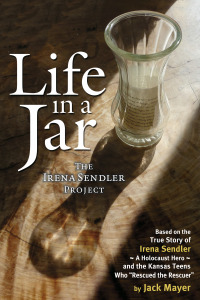Return to Witnesses
Auschwitz Survivor Filip Muller’s Testimony

From the testimony of Filip Muller, an Auschwitz survivor, Connilyn Feig reports the following account in “Hitler’s Death Camps”:
Filip Muller, a young Slovakian, arrived early in Auschwitz _ April 1942 _ and survived! He did so, however, because of his forced work assignment as a stoker in the Auschwitz crematorium and then as a jack-of- all-trades in the Birkenau extermination plant squad, the Sonderkommando.
While the corpses burned, the stokers stripped the waiting bodies. At the most fifty-four bodies could be cremated in one hour. The continuous overloading and operation of the ovens caused the inner fire bricks to crumble. The staff built a new modern chimney in the summer of 1942. But it soon evidenced crumbling; and the extermination process, never very effective, began to disintegrate. Himmler soon became dissatisfied. The process moved too slowly; the stench contaminated the surrounding countryside at night; and the red sky over Auschwitz could be seen for miles.[11]
Connilyn Feig provides an overview of the operation of the crematoria (Request auschwitz.01), and describes the process by which the stoking gangs sorted bodies into combustibility categories as the result of earlier experiments by the SS staff to reduce fuel consumption. In this effort, they had the assistance of the firm of Topf and Sons, who had built the crematoria.
In essence, well-nourished corpses were burned with emaciated ones in order to determine the most efficient combination. Three to four bodies were burned at a time, and different kinds of coke were used, then the results were recorded:
Afterwards, all corpses were divided into the above-mentioned categories, the criterion being the amount of coke required to reduce them to ashes. Thus it was decreed that the most economical and fuel-saving procedure would be to burn the bodies of a well-nourished man and an emaciated woman, or vice versa, together with that of a child, because, as the experiments had established, in this combination, once they had caught fire, the dead would continue to burn without any further coke being required. (Müller, 60-61; Klarsfield, 99-100)
The need for large-scale efficiency, to cope with the astounding number of corpses produced by the gas chambers, eventually led to the design and construction of new crematoria, and daily capacity rose from as low as six hundred forty eight per day (MÅller’s 1942 figure) to a high of over ten thousand (Ho”ss, Gricksch. Request deathcamp.02, Gricksch.rpt, and jahrling.may43), but, as Feig tells us, the SS eventually had to employ large pyres and pits to dispose of the mounting pile of corpses:
As early as June 13, 1943, all was not well with the new installation. … Eventually the ovens seemed to fall apart. Crematorium Four failed completely after a short time and Crematoria Five had to be shut down repeatedly. (TWC, V:624) (Between 1945 and 1962 Polish officials found five manuscripts written by Sonderkommando members before their deaths. The published manuscripts and documents relate to the specific process of extermination at Birkenau, and provide detailed descriptions of the crematoria and gas chambers.)
The scientifically planned crematoria should have been able to handle the total project, but they could not. The whole complex had forty-six retorts, each with the capacity for three to five persons. The burning in a retort lasted about half an hour. It took an hour a day to clean them out. Thus it was theoretically possible to cremate about 12,000 corpses in twenty four hours or 4,380,000 a year.
But the well-constructed crematoria fell far behind at a number of camps, and especially at Auschwitz in 1944. In August the total cremation reached a peak one day of 24,000, but still a bottleneck occurred. Camp authorities needed an economic and fast method of corpse disposal, so they again dug six huge pits beside Crematorium Five and reopened old pits in the wood.
Thus, late in 1944, pit burning became the chief method of corpse disposal. The pits had indentations at one end from which human fat drained off. To keep the pits burning, the stokers poured oil, alcohol, and large quantities of boiling human fat over the bodies.
Return to Witnesses



